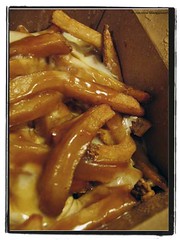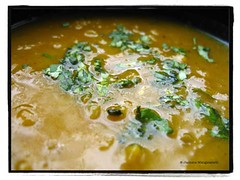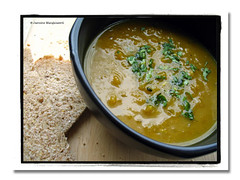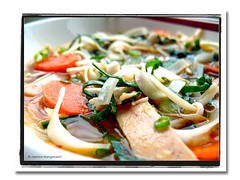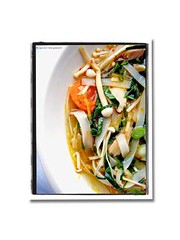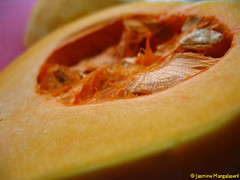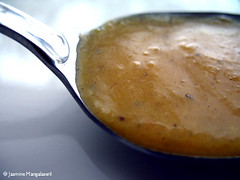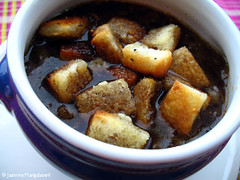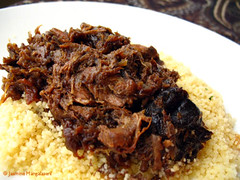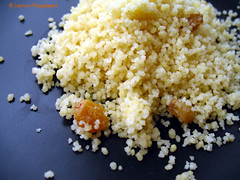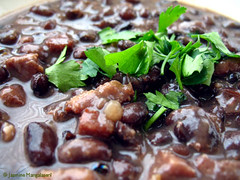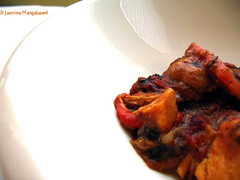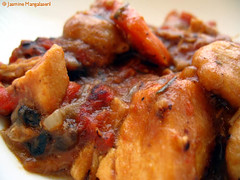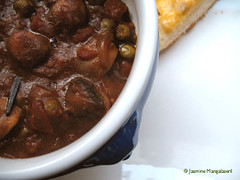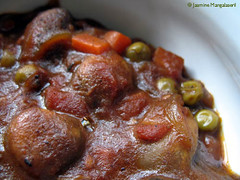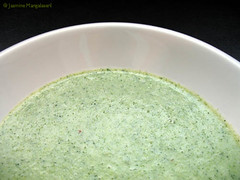Those 38 words--contemplative, declarative, confessorial and challenging--posted in 2013's waning hours, pretty much summed up so many in my Facebook news feed.
What followed were messages from the bereaved, those who've worn ruts to and from hospital, as well as those who've been discarded by employers or lovers.
Snaps of smiling faces, happy pets, copious foods and drinks, as well as messages of peace and goodwill were there, but a steady stream of resolve, hope and strength kept coming though from all corners of the world.
2013 wasn't a great year for many in my circles, but we came through together, some more bruised than others. Regardless, unlike entering into 2013, there is a determination to face the good and the bad with the sort of aplomb reserved by those who don't have the luxury of resting on laurels or the assured safety of a soft landing.
 So while I take stock of my own 2013 and gird myself for whatever 2014 throws at me, I decided to simmer a pot of Hoppin' John Soup to encourage good fortune and optimism.
So while I take stock of my own 2013 and gird myself for whatever 2014 throws at me, I decided to simmer a pot of Hoppin' John Soup to encourage good fortune and optimism.
Hoppin' John is a southern US peas and rice dish, which may have evolved from what was fed to African slaves transported to the US. The modern dish itself is usually made with rice, black eyed peas (or field peas) with onion, pork, salt and greens such as kale, cabbage or collard greens.
Today, it's traditionally eaten on New Year's Day to bring diners good luck and prosperity. The peas symbolise coins, pork represents optimism, and the greens symbolize banknotes. I've also seen an interpretation where the peas represent peace and the rice, riches.
Whether you believe a dish can usher good luck, riches and peace, my take on the popular American food offers a hearty and warming meal. I made this soup after looking at several recipes for the traditional meal and its brothy cousin. My inspirations came from my friend Kalyn, Emeril Lagasse and AllRecipes.
The soup is smoky, salty and above all, hearty and warming. The rice breaks down and thickens the tomatoey broth. The peas are toothsome and not overcooked. The greens are silky soft.
Whether or not it brings luck…well, ask me in at the end of the year.
What followed were messages from the bereaved, those who've worn ruts to and from hospital, as well as those who've been discarded by employers or lovers.
Snaps of smiling faces, happy pets, copious foods and drinks, as well as messages of peace and goodwill were there, but a steady stream of resolve, hope and strength kept coming though from all corners of the world.
2013 wasn't a great year for many in my circles, but we came through together, some more bruised than others. Regardless, unlike entering into 2013, there is a determination to face the good and the bad with the sort of aplomb reserved by those who don't have the luxury of resting on laurels or the assured safety of a soft landing.
 So while I take stock of my own 2013 and gird myself for whatever 2014 throws at me, I decided to simmer a pot of Hoppin' John Soup to encourage good fortune and optimism.
So while I take stock of my own 2013 and gird myself for whatever 2014 throws at me, I decided to simmer a pot of Hoppin' John Soup to encourage good fortune and optimism.Hoppin' John is a southern US peas and rice dish, which may have evolved from what was fed to African slaves transported to the US. The modern dish itself is usually made with rice, black eyed peas (or field peas) with onion, pork, salt and greens such as kale, cabbage or collard greens.
Today, it's traditionally eaten on New Year's Day to bring diners good luck and prosperity. The peas symbolise coins, pork represents optimism, and the greens symbolize banknotes. I've also seen an interpretation where the peas represent peace and the rice, riches.
Whether you believe a dish can usher good luck, riches and peace, my take on the popular American food offers a hearty and warming meal. I made this soup after looking at several recipes for the traditional meal and its brothy cousin. My inspirations came from my friend Kalyn, Emeril Lagasse and AllRecipes.
The soup is smoky, salty and above all, hearty and warming. The rice breaks down and thickens the tomatoey broth. The peas are toothsome and not overcooked. The greens are silky soft.
Whether or not it brings luck…well, ask me in at the end of the year.
Hoppin' John Soup
Yield: approx 2.5 LIngredients
225g (0.5lb) dried black eyed peas, picked and soaked overnight
flavourless oil
1 onion, chopped to small dice
1 celery rib, chopped to small dice
1 red or yellow bell pepper, chopped to small dice
1 garlic clove, minced
500ml (2c) chopped tomatoes
1dspn/2tsp (10ml) Cajun seasoning (see notes)
0.5tsp (2.5ml) dried thyme OR 1.5tsp (12.5ml) fresh thyme
1 large pinch of dried chilli pepper flakes
1-2 bay leaves
2L (8c) chicken or vegetable stock (more, if you want your soup more brothy)
100g (125ml/0.5c) raw rice (see notes)
1 ham hock, ham bone or pieces of ham rind (optional)
225g ham, chopped to small dice (see notes)
1 bunch Swiss chard, chopped (chiffonade), green parts only -- approximately 1.5L (6c) (see notes)
1dspn/2tsp (10ml) apple cider vinegar
Method
- Slick your soup pot with oil and light the hob to a medium flame. Add onions, celery and bell pepper. Saute until soft. Add garlic and stir until the air is perfumed with garlic.
- Add tomatoes, Cajun spice, thyme, chilli and bay leaves. Mix well and cook (uncovered) for about 10 minutes, occasionally to crushing the tomatoes and stirring, to ensure the veggies don't catch.
- Add chicken stock, rice and ham hock (if using). Stir, bring to a boil and cook for 30 minutes.
- Drain the beans of their soaking water and tip the beans, along with the ham, greens and apple cider vinegar, and give it all a good stir. Bring the soup back up to the boil and turn the flame down to a simmer and let the soup cook for another 30-45 minutes. Stir occasionally. The peas should be tender, the rice soft and collapsing, and the greens, silken. Balance flavours to taste.
- Serve with a good loaf of crusty bread or cornbread.
Notes:
- Cajun seasoning: you can use a shop-bought spice mix or make your own (the recipe I use is Emeril Lagasse's Essence)
- Rice: Most recipes I've seen call for long grain/wild rice, or seasoned rice mixes. I used basmati, which works well.
- Ham: I made this with half a slice of ham steak (with the bone), but you can use leftover ham, bacon or sausage (I think English bangers (with lots of sage) or fresh chorizo would work well).
- Greens: I think the point is have something green and leafy--so use what you have chard, kale, spinach, collard greens, etc.
cheers!
jasmine
I'm a quill for hire!




